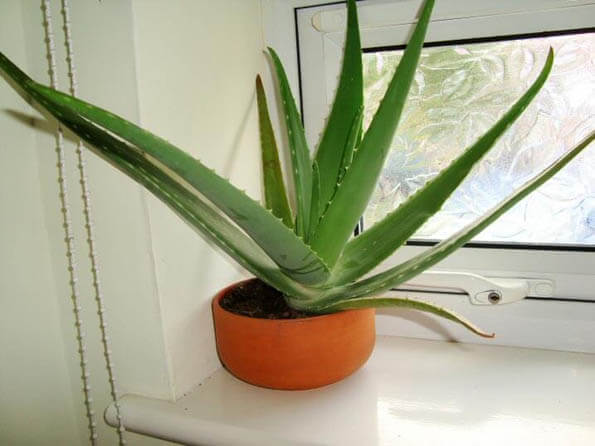Aloe vera is an attractive and easy-to-use succulent that makes it a great indoor companion. Aloe Vera plants are also useful because the juice from their leaves can be used to relieve pain caused by scrapes and burns when applied locally. Here’s how to grow and care for aloe vera plants in your home!
Aloe vera is a succulent plant of the genus Aloe. The plant is stemless or has a very short stem, with thick, fleshy green leaves that emerge from the central stem of the plant. The edge of the leaf is serrated with small teeth.
Before buying an aloe, note that you will need a location with direct and indirect light (or artificial light). However, the plant does not like direct sunlight because it tends to dry out too much and turn its leaves yellow.
Store aloe vera in a jar near a kitchen window for periodic use, but avoid direct sunlight reaching it.
Note: Aloe vera leaf gel can be used topically, but should not be ingested by people or pets. It can cause unpleasant symptoms such as nausea or indigestion and can even be toxic in large quantities.
PLANTING:
BEFORE PLANTING
It is important to choose the right type of planter. A pot made of terracotta or similar porous material is recommended, as it will allow the soil to dry out completely between waterings and will also be heavy enough to prevent the plant from tipping over. A plastic or glass jar can also be used, although these retain more moisture.
When choosing a container, be sure to choose one that has at least one drainage hole at the bottom. This is essential because the hole will allow excess water to drain out.
Select a container as wide as it is deep. If your aloe has a stem, choose a container deep enough to plant the entire stem under the ground.
Aloe vera plants are succulents; So use a well-draining potting soil, like those designed for cacti and succulents. Do not use soil. A good mix should contain perlite, lava rock, coarse sand, or all three. Aloe vera plants are hardy, but a lack of adequate drainage can cause rot and wilt, which is easily the most common cause of death for this plant.
A layer of gravel, clay balls or any other “drainage” material at the bottom of the pot is not necessary. It only takes up space that the roots could use otherwise. A drainage hole is enough!
(Optional) To encourage your aloe to plant new roots after planting, sprinkle the stem of the plant with a rooting hormone powder. The rooting hormone can be found at a local garden center or hardware store, or online.
HOW TO PLANT AN ALOE VERA PLANT
- If your aloe plant has grown too large, has grown too large, or just needs improvement, it’s time to repot it. Here’s how:
2. Prepare your pot. After quickly rinsing the new pot (or a good scrub, if it’s a pot you’ve used before) and letting it dry completely, place a small piece of screen over the drainage hole ; this will prevent the soil from falling from the bottom and allow the water to drain properly. A piece of lined paper towel or newspaper can also work, although these will decay over time.
3. Prepare your plant. Remove the aloe vera from its existing pot and remove excess dirt from the roots, taking care not to damage them.
4. If your plant has puppies, remove them now. (See the “Maintenance” section of this page for instructions on removing and repotting puppies.)
5. If your plant has a very long, slender stem that does not fit in the pot, it is possible to cut the stem partially. Note that this is risky and could kill the plant. To cut the stem: Cut a part of the stem, leaving as much as possible on the plant. Then take the bare plant and place it in a warm place where the light is indirect. After several days, calluses will form on the wound. At this point continue with the potting instructions below.
6. Plant your plant. Fill the pot about a third of the way with well-draining potting soil, then place your plant in the ground. Continue to fill the soil around the plant, keeping in mind that you need to leave at least 1/4 inch of space between the top of the soil and the edge of the pot. The bottom leaves of the aloe should also sit just above the ground. Do not water after planting.
7. Ignore your plant (temporarily). Once you have placed your aloe in its new pot, do not water it for at least a week. This will decrease the chance of inducing rot and give the plant time to plant new roots. Until the plant appears to be rooted and happy, keep it in a warm place that receives bright but indirect light.
CLICK NEXT PAGE BELOW TO CONTINUE READING …










